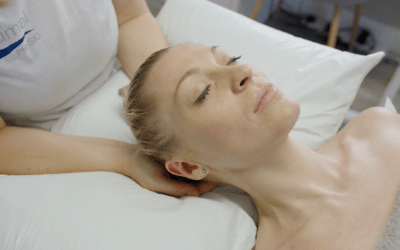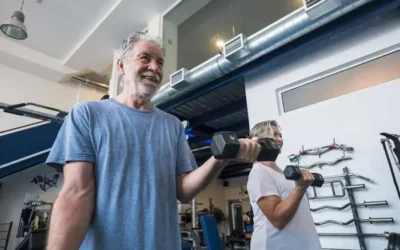In the last blog we identified that training errors are a common cause of injuries. Not only is there a common reason why injuries occur but there are also common injuries experienced by runners.
Understanding your injury, where and why it hurts is the first step in applying the correct treatment and rehabilitation exercises.
1. Patellofemoral Pain (Runner’s Knee)
The structural issue behind this type of injury can affect the top runners and amateurs alike and accounts for nearly 50% of all running injuries.
Runner’s knee or more technically known as patellofemoral pain syndrome is pain at the front of the knee that affects the cartilage just underneath your knee cap (patella).
This injury presents with a lot of tenderness around or behind your knee cap, aggravated by downhill running or when running on uneven terrain. When this joint becomes painful this injury is then magnified by the training errors in place.
There can be alignment issues, poor strength and flexibility or a muscle imbalance.
A clinician can determine where the underlying issue occurs and devise a specific rehab plan.
Treatment might begin with reducing the period of inflammation with ice therapy and as it is a joint it will respond well to anti-inflammatories and sometimes taping can work well.
Treatment can include some manual therapy but the real value comes from improving the mobility of the hip flexors and the strength around the hip with the aim to progressively increase the joint and muscle load to restore the joint back to running.
To prevent runner’s knee we want to be proactive by including appropriate strengthening, listen to your body and responding at the first sign of discomfort.
2. Hamstring Injuries
Hamstring injuries are usually one of two types; either a strain or a tear.
The hamstring is being worked really hard when running at speed with hamstring injuries accounting for about 7% of running injuries and pushing through hamstring pain can morph into a debilitating tear.
If pain gradually develops over time as the run continues this indicates a strain. You will be able to continue running with a shorter stride, and you won’t loose any strength or develop any bruising.
If you get a sudden onset of pain whilst your running, this is an indication of a tear. You feel it develop really suddenly behind the back of your leg and the severity of the injury can vary hugely.
Your main aim if you have a hamstring strain, is to manage the acute phase properly. Inflammation is GOOD in this situation. Avoid ibuprofen for at least 48 hours to get your body’s own natural anti-inflammatory system working.
Exercise therapy will start with slow and progressive activation exercises which are pain free. This should gradually increase over the next stage of your rehab, the severity of your injury will determine how quickly you make progress.
Rehabilitation should focus on strengthening not just your hamstrings but your pelvis, core and glutes as they all have a play a role in supporting how your hamstrings work.
One of the most effective exercises focuses on your eccentric strength. This means the muscle is lengthening and strengthening at the same time.
As with any muscle injury the key is to manage the acute phase well and start the strengthening phase as early as possible. Avoid pushing through pain, avoid alcohol (this interferes with oxygen delivery), avoid anti-inflammatories and avoid stretching it in the early days until your pain free on resistive testing.
After this point you start to progress the load as quickly as pain allows and then start to restore the length and mobility into the whole muscle.
3. Plantar Faciitis
Plantar fasciitis, plantar faciopathy or plantar heel pain affects 15% of all running injuries in the foot.
The foot absorbs forces of three times the body weight when you’re running. The plantar fascia, (the sole of your foot), is a thick elastic tissue that stretches from your heel at the base of your foot and inserts into each of the five metatarsal bones in your foot.
Plantar fasciitis does get better over time, so if you do absolutely nothing it will recover in the majority of cases. The downside, however is that without rehab or treatment this process can take up to a year.
Some of the symptoms of plantar fasciitis include a sharp stabbing pain or deep ache in the arch of your foot or bottom of your heel. Stiffness and pain first thing in the morning that worsens throughout the day as the body fatigues. It’s a nagging injury, running through it can delay healing and if you don’t address it right away it can become chronic.
Some of the causes of plantar fasciitis include over-training, too much, too soon, or neglecting to stretch the calf muscles or wearing unsupportive shoes.
Physiotherapy to mobilise and release tight fascia in the foot is used in those with more acute presentation. The treatment includes mobilising tight structures and fascia, and strengthening your foot muscles.
Foot strengthening exercises should be included in your program but they are not the silver bullet. The body works as a chain and different parts of the chain can contribute to the problem. This might include addressing tight hip flexors or core strength.
4. Medial Tibial Stress Syndrome (Shin Splints)
Shin splints is an umbrella term for a number of different causes of pain in the region. Pain on the inside of the shin bone known as your tibia, this pain is located right in against the bone and is very tender to touch. Predominantly caused by training errors and is usually linked to high volume training or quick progressions.
It can be quite a tricky area to diagnose so if you are unsure please get in touch with a physio who can help diagnosis and ensure rehab is accurate and effective.
Initially rest, ice and anti-inflammatories please a role but adaptation to training volume will be required.
A gait analysis can help us understand what forces the foot is tolerating, how it’s behaving and responding to load to discover the reason the injury has developed.
Managing this injury will come down to education and load management, complimented with some soft tissue release work.
Strengthening the entire lower limb and nutrition for bone healing are vital. Although often overlooked it can make a big difference to the healing process.
The prevention of this type of injury comes from gradually increasing your mileage, mixing up your training volumes, making sure you’ve got good footwear, enhancing mobility and stability of the ankle. Dynamic warm ups can help minimise your risk of shin splits for those who compete or operate at maximal intensities.
5. Iliotibial Band Syndrome (ITBS)
Your Illiotibial band, known as your ITB, is a tight band down the outside of the leg and this condition is usually prevalent only when you’re running gradually building in intensity as your run progresses. The pain is always quite low down on the outside of the knee, especially when running downhill, can become quite crippling and really impact on your training plan.
An IT band is a supporting structure, a really thick connective tissue and it is designed to be tight.
Your ITB is such a strong, resilient structure that you cannot stretch it. You do however want to focus on stretching the muscles that control it and interact with it. Despite the pain being felt in the knee these muscles are located around the pelvis.
This condition can be challenging to treat. Focussing on glute and hip strength is best for longer term results and better running times. You can use anti-inflammatories and icing in the initial phases but then increase mobility and restore normal flexibility of the hip and knee.
Preventing ITB issues involves maintaining good soft tissue mobility, running on different surfaces if you can and monitoring training load.
6. Achilles Tendinopathy
The Achilles tendon and calf muscles are really, really important when you’re running. They’re prone to overuse, purely because of its function and the nature of the task we are asking it to perform. It absorbs a lot of load through the body and can become very painful and develop weakness and dysfunction as a result.
Symptoms of Achilles tendinopathy include pain close to the heel, it’s sharp, it’s poking and it’s incapacitating. It’s usually located between two to six centimetres above the heel, is really painful when you press and compress that tendon or push off when walking or running. Uphill walking or running is a particularly challenging task. Often it causes you to change your running style or limp when walking.
It is a nightmare for all runners.
The Achilles tendon naturally has a poor blood supply and doesn’t have great healing capacity, so it does take a long time for healing to occur. Starting treatment at the acute phase or the reactive phase typically have better outcomes for recovery.
Active strengthening and loading treatment are most beneficial especially strengthening your calf, hamstrings, glutes and core. It requires patience and a plan.
Treatment strategies will differ depending on the stage of your injury and an experienced physiotherapist will be able to guide you through this and design a tailored plan specific to your needs.
For a more in depth guide to these injuries you can download the running ebook.
To speak to a physio about your running injury you can call 0333 301 0205 or book an appointment online to being your recovery.



0 Comments